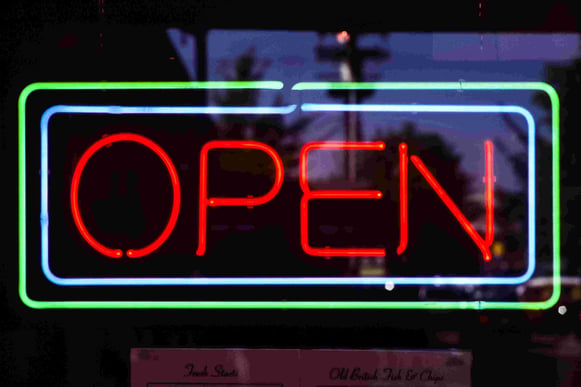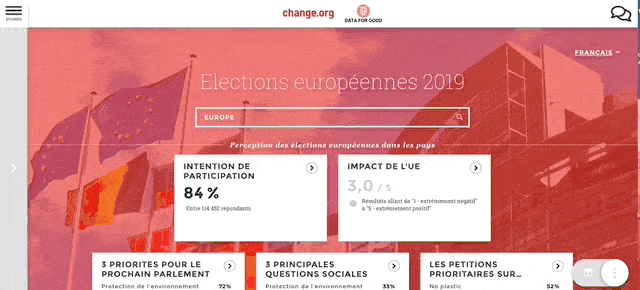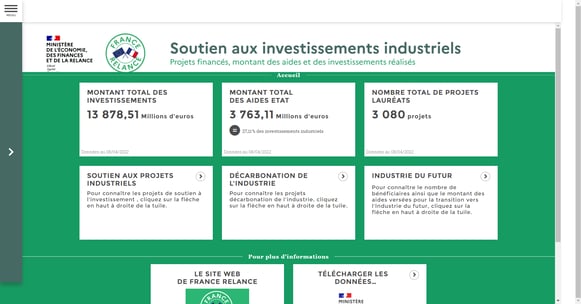Maybe the real data revolution is that critical information is now in the hands of many. It improves the lives of millions of citizens. Just think, for example, of all those traffic jams that you have been able to avoid by checking publicly available traffic updates on the go.

But this revolution can do a lot more than make your life easier. When it comes to governments, public data has far-reaching implications for policy. It can improve the functioning of democracy by offering greater transparency and encouraging citizens to participate in public life. That’s the real beauty of open data!
At a time when the health crisis followed by an economic crisis have damaged citizens’ confidence, these initiatives need to become more compelling. Despite effective governmental strategies for open data, public data is still mainly consulted by experts, analysts and other raw data geeks. We are far from the ideal of “data for all”.
We believe that, in the future, public data will not only be available and accessible, it will also be communicated in a clear, simple and intuitive way. Maybe data storytelling is open data’s next challenge!
Open, by definition
The term “open data” means data that everybody can access, whether the data was put online by a public institution, or no. In fact, many private entities, from large corporations to startups, publish open datasets online. But it is for the public sector that the issue is particularly pressing.
INTEROPERABILITY, QUALITY AND CLARITY
To be open, data must be more than just available and accessible. It must also be reusable. It has to be standardized and easy to mix with other data groups. We call this “interoperability”: programming languages are unified so that each shared dataset works perfectly in conjunction with other datasets. Although interoperability lies at the heart of open data, it is mainly of interest to users who have the required technical skills to handle tables of data directly. The general public is less concerned about this feature.
What is more important is getting quality data that is reliable and easy to understand. According to the Open Data Maturity Report, France has achieved a level of data maturity that allows it to concentrate on data quality rather than data quantity.
Another major challenge is clarity. Organizations need to know how to communicate key trends in a clear and interesting way, so that everyone can identify major findings.
WHAT ABOUT DATA PRIVACY?
For those concerned about confidentiality, the term “open data” could set alarm bells ringing: it might seem that there is nothing more contrary to the principles of the GDPR that sets out to protect the private lives of citizens in Europe. In fact, the General Data Protection Regulation only applies to personal data, which enable individuals to be identified. Open data are anonymous or have to be anonymized before they are put online.
Citizen data
With all due respect to tech enthusiasts, sharing public information dates back to well before the digital revolution. As early as 1789, the French Declaration of the Rights of Man and of the Citizen stated that: “Society has the right to require of every public agent an account of his administration”. Government transparency is a basic principle of democratic republics.
GREATER TRANSPARENCY BY AUTHORITIES
In addition to the legal framework that prescribes data sharing, there are many organizations to help government bodies implement open data projects: in France, Etalab is the inter-ministerial task force charged with the State data-sharing strategy, whilst in the US, the Data Coalition advocates for a better use of Data by public policy makers.
Opening up data also offers many benefits to the public organizations themselves: it enables them to demonstrate the effectiveness of their actions and reduces their workload by removing the need to process direct requests from citizens.
BETTER-INFORMED CITIZENS
Although they are extremely useful for the administrations who implement them, open data initiatives must benefit citizens first and foremost. Giving access to raw data is not enough. Data must be presented in a way that helps citizens to make sense of the information, so that they feel involved in democratic life. This aspect of data analysis is crucial for encouraging the public to keep up-to-date with the actions of the government and hold their elected representatives accountable. Some government portals are meeting this challenge with flying colors. In the USA, for example, the USA spending platform tracks how much federal money has been spent on COVID-19.
Even when it is not produced directly by public authorities, data provides important guidance that greases the wheels of democracy if it is presented in an informative way. For the 2019 European elections, Toucan Toco supported change.org and Data For Good in implementing a portal that showed the voting intentions and the perception of the EU by European country and by respondents’ profile. This proved to be an important yardstick for measuring political engagement in Europe.
Is open data storytelling the way forward
Open data is not just about complying with the law. Opening data is key for organizations who want to have effective public relationship management and show the impact of their policies. It is an exercise in communication that should not be ignored, especially in times of crises that damage pubic confidence. But the issue is that these initiatives can fall short of being informative, and just end up baffling anyone who is not a data expert.
THE BEST PORTALS
A lot depends on the choice of portal. Many public organizations are currently using costly, time-consuming dashboards that are not user-friendly. Yet others stand out as great examples of dynamic, easy-to-use sites where users can see key information at first glance. To give you some inspiration, we have listed the 10 best examples of open data portals.
TELL A STORY WITH YOUR PUBLIC DATA
Putting open, accessible datasets online is not enough to strengthen engagement and citizen participation in public life. Organizations must go further and put raw data into a meaningful context. Presenting data this way brings it to life and tells a narrative that is relevant and compelling.
This method of data visualization and communication is called data storytelling. It is already used by many private organizations to enable better decision-making, by providing broader access to information, and offering different stakeholders a holistic view of the business and the market. When applied to open data initiatives, it gives everyone the information they need to participate in a democratic society.




